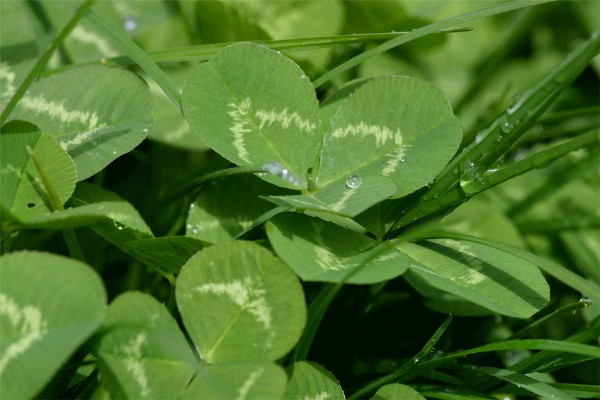

With their ability to provide high yields of good quality forage and to fix ‘free’ nitrogen from the atmosphere, clovers are finding popularity on many farms. Clovers are combined with grasses to provide leys with both nutritional and environmental benefits. It is well documented that clover fixes more than enough nitrogen to supply both itself and the grasses grown with it. In addition, the inclusion of clover in a ley can raise the protein content of forage by as much as 3%.
The main species of clover used are white, red and alsike. White clover is usually used for long term grazing and red clover for two or three year silage or hay production. Alsike clover can be cut or grazed and is unusual for a legume as it will grow quite acceptably on wet or acidic soils. The establishment of these three important legumes is identical. However, there are some key establishment and management guidelines that need to be applied in order to get the high proportion of clover needed if this type of ley is to be successful.
Establishing Clover Leys
For sound establishment, a well cultivated, firm and level seedbed is essential. Clovers have small seeds and they will not grow satisfactorily unless they are sown at a uniformly shallow depth of around 10mm. Clover seedlings are not competitive once they have emerged and it is at this stage that weeds may need to be controlled. This can be done by topping or using a ‘clover-safe’ herbicide, although these can check clover growth to some degree.
Clover leys can be sown in the spring or autumn. To germinate, clover seed needs a soil temperature in excess of 6 degrees centigrade. This is usually reached in mid March. Spring sown clover usually establishes well and seed mixtures can be undersown to cereals. Sowing rates of spring cereal should be reduced by one third otherwise the undersown ley may be smothered. Alternatively clover/grass mixtures can be direct sown. When sowing in the autumn, clover seedlings can be vulnerable to slugs and weevil damage. It is therefore essential to sow by mid September to ensure fast establishment.
Once sown it is vital to consolidate the seedbed by rolling. This is important because the roller presses the seed into intimate contact with soil particles which leads to a faster transfer of soil moisture to the seed and ultimately faster germination and establishment.
Provided the sward contains 30-40% clover there is little need to apply artificial nitrogen fertiliser. To achieve this high clover content the seed mixture will need to contain 1.5 kg of white or alsike clover or around 3 kg of red clover per acre. Grasses should be included at around 10 kg per acre; any higher and they may smother the clovers as they are more competitive as seedlings.
Over-Seeding Existing Pasture
Techniques have been developed to introduce clover into existing pasture and there are many situations where this is advantageous. For example, in permanent pasture systems the prospect of ploughing and reseeding may not be welcomed in order to add clover to the sward. However, white clover seed (with its grazing potential) can be oversown into existing pasture with little interruption to grazing management. The key is to tightly graze before sowing, graze again 4-5 weeks after sowing and avoid cutting for hay or silage for the rest of the season. Sowing should be avoided during May and June when grass growth is usually too competitive to allow the clover to establish. The seed should be surface sown with a grass seed drill or broadcast. It is often beneficial to harrow before sowing to open up the sward. There needs to be an adequate supply of soil moisture and should there be any phosphate or potash deficiencies, then these need correcting before sowing.
White clover seed should be sown at 2 kg per acre. Medium or small leaved varieties are recommended and it is usual to use at least two varieties.
Finally, it is not surprising that more farmers are rediscovering the benefits of using clover leys. These plants are valuable to all farmers as they produce good quality forage that ruminants enjoy eating and more importantly they do it very cheaply.
by Ian Wilkinson of Cotswold Seeds
Date Posted: 30th March 2017



